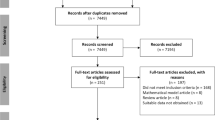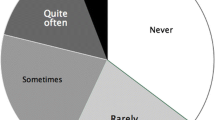Abstract
Allogrooming serves many social functions in primates. Grooming can help individuals to service social relationships generally, sometimes reciprocally, and may be particularly important in the development and maintenance of alliances. However, time constraints limit the number of partners with whom one individual can groom enough to maintain cooperative relationships. As a result, the size of its grooming network may reach an asymptote as the size of its group increases, and it may distribute its grooming less equally among potential partners. Chimpanzees live in multimale, fission-fusion communities; males are philopatric, and commonly associate and groom with each other. Males form within-community alliances that influence dominance rank and access to mates, and allies groom with each other regularly; males also cooperate in aggression between communities. The chimpanzee community at Ngogo, in Kibale National Park, Uganda, is unusually large and has more males than any other known community. Field data show that adult Ngogo males groomed far more with other adult males than with females or with adolescent males, in contrast to a previous report (Ghiglieri, 1984). Adolescent males groomed adults much more than the reverse; males groomed and were groomed by females about equally. Individual males groomed mostly with a small number of other males. On average, males at Ngogo had only slightly more male grooming partners overall and had the same number of important partners as those of males in a much smaller community in the Mahale National Park, Tanzania, and they distributed their grooming less equitably. These results fit those expected if limits on available grooming time cause males to have a loyalty problem as the number of potential grooming and alliance partners increases. Despite differences in the extent and equitability of their grooming networks, males at both Ngogo and Mahale showed reciprocity in grooming. Grooming reciprocity has been demonstrated for captive chimpanzee males, but the Ngogo findings are the first demonstrations of reciprocity in wild communities.
Similar content being viewed by others
REFERENCES
Altmann, J. (1980). Baboon Mothers and Infants. Harvard University Press, Cambridge.
Butynski, T. 1994. Comparative ecology of blue monkeys (Cercopithecus mitis) in high and low density subpopulations. Ecol. Monogr. 60: 1-26.
Bygott, D. (1979). Agonistic behavior, dominance, and social structure in wild chimpanzees of the Gombe National Park. In: Hamburg, D., and McKown, E. A. (eds.), The Great Apes, Benjamin-Cummings, Menlo Park, CA, pp. 405-427.
Cords, M. (1997). Friendships, alliances, reciprocity, and repair. In: Whiten, A., and Byrne, R. W. (eds.), Machiavellian Intelligence II: Extensions and Evaluations, Cambridge University Press, Cambridge, pp. 24-49.
Di Bitetti, M. S. (1997). Evidence for an important social role of allogrooming in a platyrrhine primate. Anim. Behav. 54: 199-211.
Dow, M., Cheverud, J., and Friedlander, J. (1987). Partial correlations of distance matrices in studies of population structure. Am. J. Phys. Anthropol. 72: 343-352.
Dunbar, R. I. M. (1984). Reproductive Decisions: An Economic Analysis of the Gelada Baboon Social System. Princeton University Press, Princeton.
Dunbar, R. I. M. (1988). Primate Social Systems. Cornell University Press, Itahca.
Dunbar, R. I. M. (1989). Social systems as optimal strategy sets: The costs and benefits of sociality. In: Standen, V. and Foley, R. (eds.), Comparative Socioecology, Blackwell, Oxford, pp. 73-88.
Dunbar, R. I. M. (1992). Time: A hidden constraint on the behavioral ecology of baboons. Behav. Ecol. Sociobiol. 31: 35-49.
Dunbar, R. I. M. (1993). Functional significance of social grooming in primates. Folia Primatol. 57: 121-131.
Dunbar, R. I. M., and Dunbar, P. (1988). Maternal time budgets of gelada baboons. Anim. Behav. 36: 970-980.
Ghiglieri, M. (1984). The Chimpanzees of the Kibale Forest. Columbia University Press, New York.
Goodall, J. (1968). Behaviour of free-living chimpanzees of the Gombe Stream area. Anim. behav. Monogr. 1: 163-311.
Goodall, J. (1986). The Chimpanzees of Gombe. Harvard University Press, Cambridge.
Hemelrijk, C. K. (1990a). Models of, and tests for, reciprocity, unidirectionality, and other social interaction patterns at group level. Anim. Behav. 39: 1013-1029.
Hemelrijk, C. K. (1990b). A matrix partial correlation test used in investigations of reciprocity and other social interaction patterns at a group level. J. Theor. Biol. 143: 405-420.
Hemelrijk, C. K., and Ek, A. (1991). Reciprocity and interchange of grooming and 'support' in captive chimpanzees. Anim. Behav. 41: 923-935.
Hemelrijk, C. K., van Laere, G. J., and van Hooff, J. A. R. A M. (1991). Sexual exchange relationships in captive chimpanzees? Behav. Ecol. Sociobiol. 30: 269-275.
Hemelrijk, C. K., and Luteijn, M. (1998). Philopatry, male presence, and grooming reciprocation among female primates: A comparative perspective. Behav. Ecol. Sociobiol. 42: 207-215.
Henzi, S. P., Lycett, J. E., and Piper, S. E. (1997). Fission and troop size in a mountain baboon population. Anim. Behav. 53: 525-35.
van Hooff, J. A. R. A. M., and van Schaik, C. P. (1994). Male bonds: Affiliative relationships among nonhuman primate males. Behaviour 130: 309-337.
Mitani, J. C., and Watts, D. P. (1999). Demographic influences on the hunting behavior of chimpanzees. Am. J. Phys. Anthro. 109: 439-454.
Nishida, T. (1968). The social group of wild chimpanzees in the Mahali Mountains. Primates 9: 167-224.
Nishida, T. (1979). The social structure of chimpanzees in the Mahale Mountains National Park. In: Hamburg, D., and McKown, E. A. (eds.), The Great Apes, Benjamin-Cummings, Menlo Park, CA, pp. 73-121.
Nishida, T. (1983). Alpha status and agonistic alliance in wild chimpanzees (Pan troglodytes schweinfurthii). Primates 24: 318-336.
Nishida, T., and Hosaka, K. (1996). Coalition strategies among adult male chimpanzees of the Mahale Mountains, Tanzania. In: McGrew, W. C., Marchant, L. A., and Nishida, T. (eds), Great Ape Societies, Cambridge University Press Cambridge, pp. 114-134.
Noë, R. (1992). Alliance formation among male baboons: Shopping for profitable partners. In: Harcourt, A. H. and de Waal, F. B. M. (eds.), Coalitions and Alliances in Humans and Other Animals, Oxford University Press, Oxford, pp. 285-322.
Noë, R., de Waal, F. B. M., and van Hooff, J. A. R. A. M. (1980). Types of dominance in a chimpanzee colony. Folia Primatol. 34: 90-110.
Parr, L. A., Matheson, M. D., Bernstein, I. S., and de Waal, F. B. M. (1997). Grooming down the hierarchy: Allogrooming in captive brown capuchin monkeys. Anim. Behav. 54: 361-367.
Perry, S. (1996). Female-female social relationships in wild white-faced capuchin monkeys. Am. J. Primatol. 40: 167-182.
Pepper, J., Mitani, J. C., and Watts, D. P. (1999). General gregariousness and specific partner preferences among wild chimpanzees. Intl. J. Primatol. 20: 613-632.
Pielou, E. C. (1977). Mathematical Ecology, J. Wiley, New York.
Sambrook, T. D., Whiten, A., and Strum, S. C. (1995). Priority of access and grooming patterns of females in a large and a small group of olive baboons. Anim. Behav. 50: 1667-1682.
Schnell, G. D., Watt, D. J., and Douglas, M. E. (1985). Statistical comparison of proximity matrices: Applications in animal behavior. Anim. Behav. 33: 239-253.
Takahata, Y. (1990). Social relationships among adult males. In: Nishida, T. (ed.), The Chimpanzees of the Mahale Mountains, Tokyo University Press, Tokyo, pp. 149-170.
de Waal, F. B. M. (1982). Chimpanzee Politics. Johns Hopkins University Press, Baltimore.
de Waal, F. B. M. (1984). Sex differences in the formation of coalitions among chimpanzees. Ethol. Sociobiol. 5: 239-255.
de Waal, F. B. M. (1989). Food sharing and reciprocal obligations among chimpanzees. J. Human Evol. 18: 433-459.
de Waal, F. B. M. (1991). Rank distance as a central feature of rhesus monkey social organization: A sociometric analysis. Anim. Behav. 41: 383-396.
de Waal, F. B. M., and Luttrell, L. M. (1986). The similarity principle underlying social bonding among female rhesus monkeys. Folia Primatol. 46: 215-234.
de Waal, F. B. M, and Luttrell, L. M. (1989). Mechanisms of social reciprocity in three primate species: symmetrical relationships or cognition? Ethol. Sociobiol. 9: 101-118.
Walters, J. R., and Seyfarth, R. M. (1987). Conflict and cooperation. In: Smuts, B. B., Cheney, D. L., Seyfarth, R. M., Wrangham, R. W., and Struhsaker, T. T. (eds.), Primate Societies, University of Chicago Press, Chicago, pp. 306-317.
Watts, D. P. (1998). Coalitionary mate guarding by male chimpanzees at Ngogo, Kibale National Park, Uganda. Behav. Ecol. Sociobil. 44: 43-56.
Watts, D. P. (2000). Grooming between male chimpanzees at Ngogo, Kibale National Park. II. Influence of male rank and possible competition for partners. Intl. J. Primatol. 21: 211-238.
Wrangham, R. W. (in press). Reverse sexual dimorphism in primate sociality: A cost of motherhood? In: Kappeler, P. K. (ed.), Primate Males, Cambridge University Press: Cambridge.
Wrangham, R. W., and Smuts, B. B. (1980). Sex differences in the behavioral ecology of chimpanzees. J. Reprod. Fertil. Suppl. 28: 13-31.
Rights and permissions
About this article
Cite this article
Watts, D.P. Grooming Between Male Chimpanzees at Ngogo, Kibale National Park. I. Partner Number and Diversity and Grooming Reciprocity. International Journal of Primatology 21, 189–210 (2000). https://doi.org/10.1023/A:1005469302911
Issue Date:
DOI: https://doi.org/10.1023/A:1005469302911




